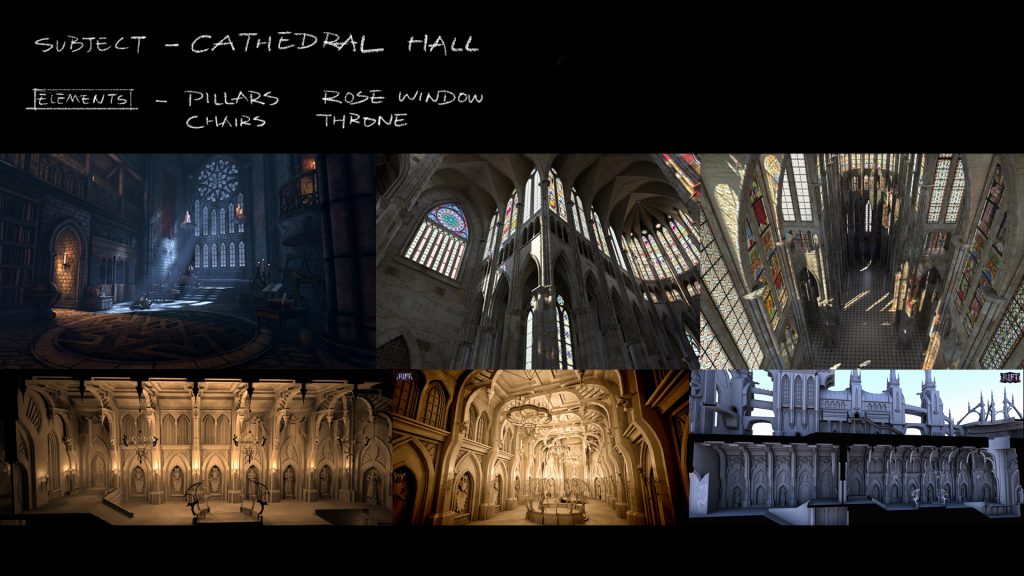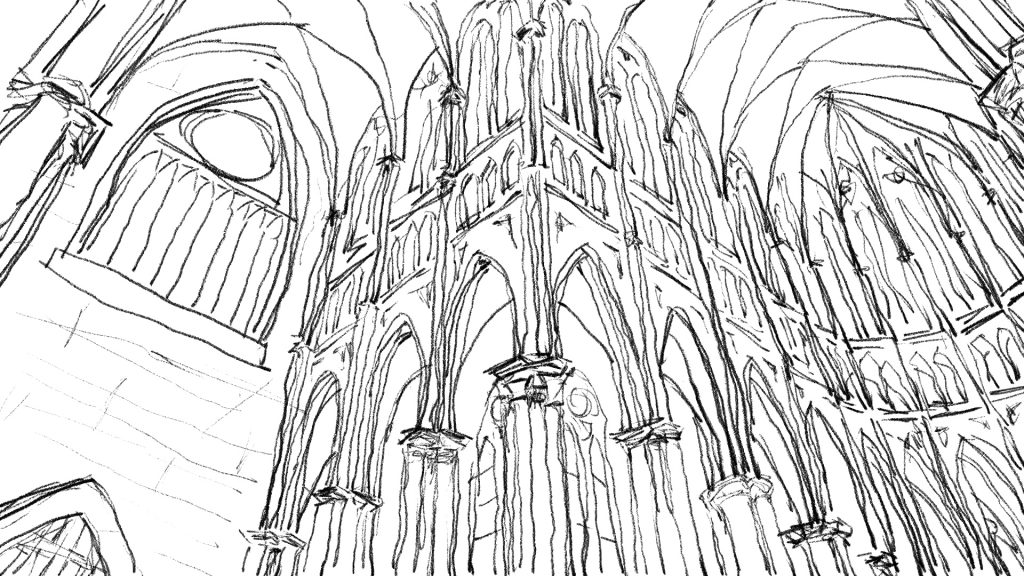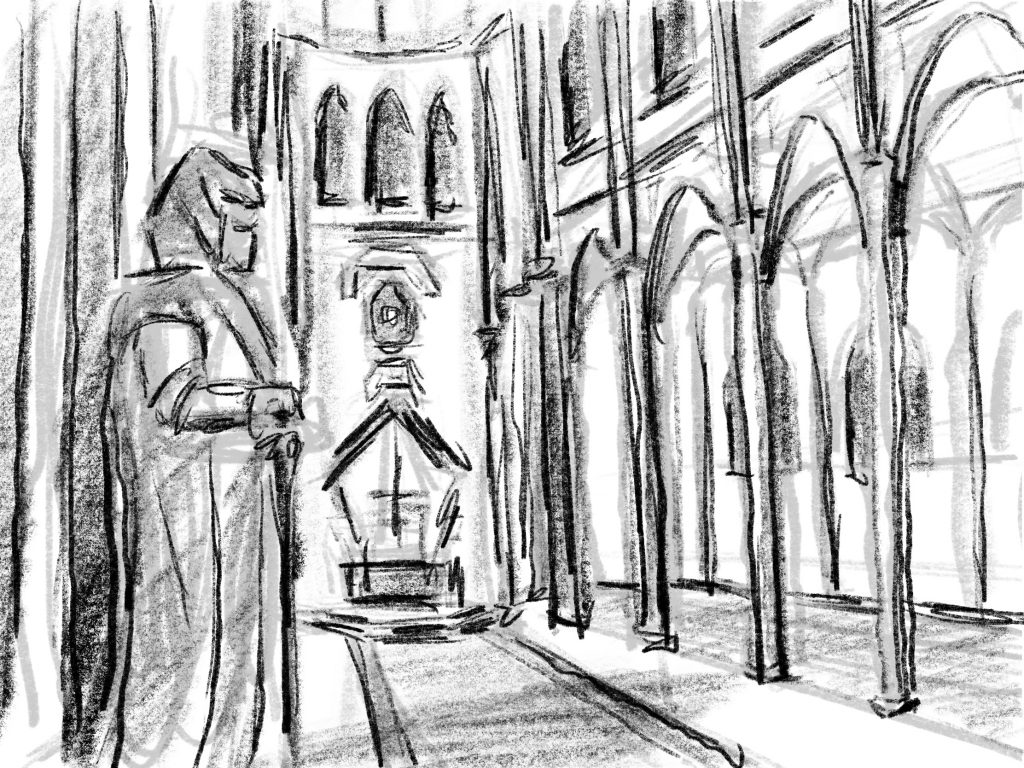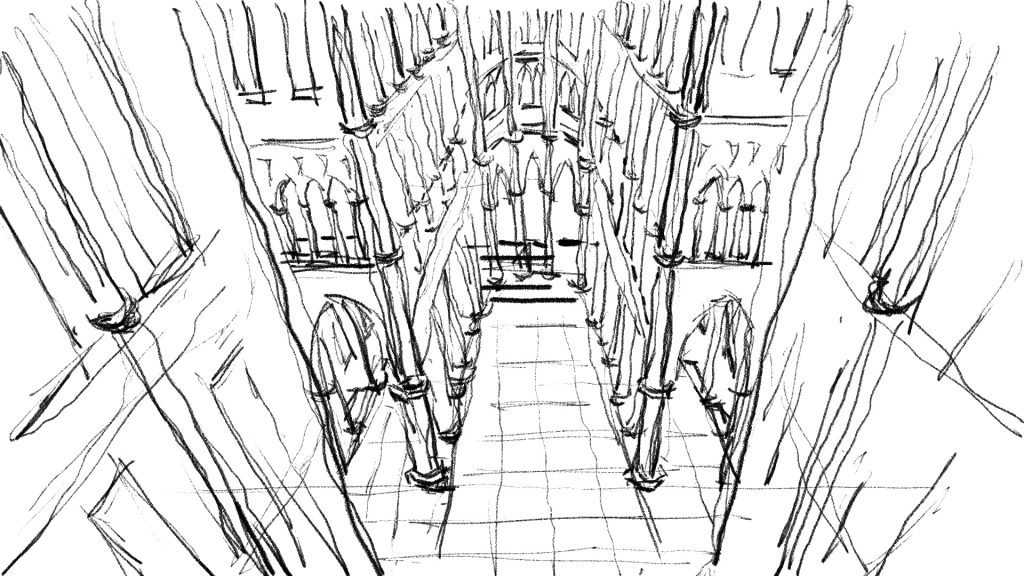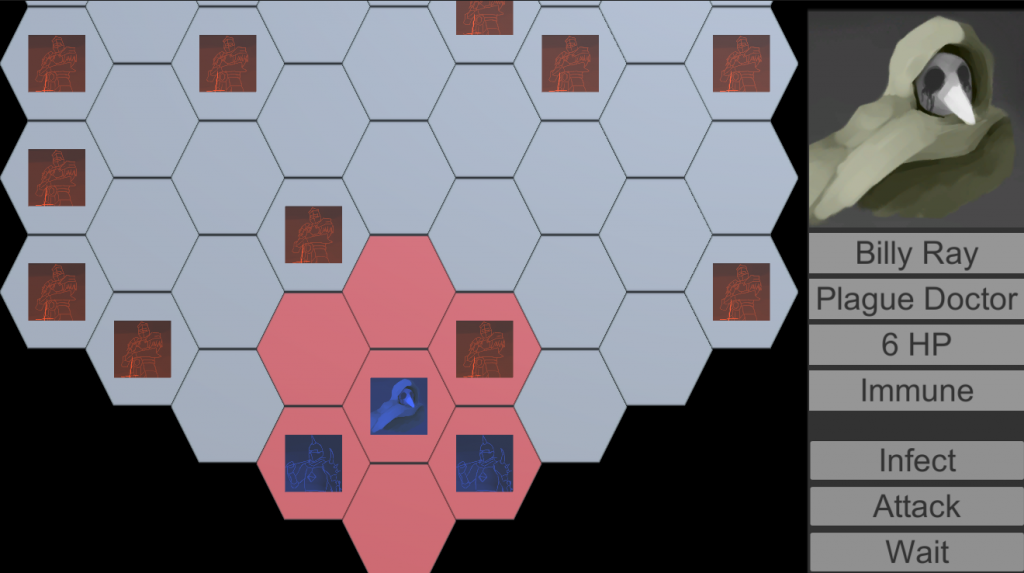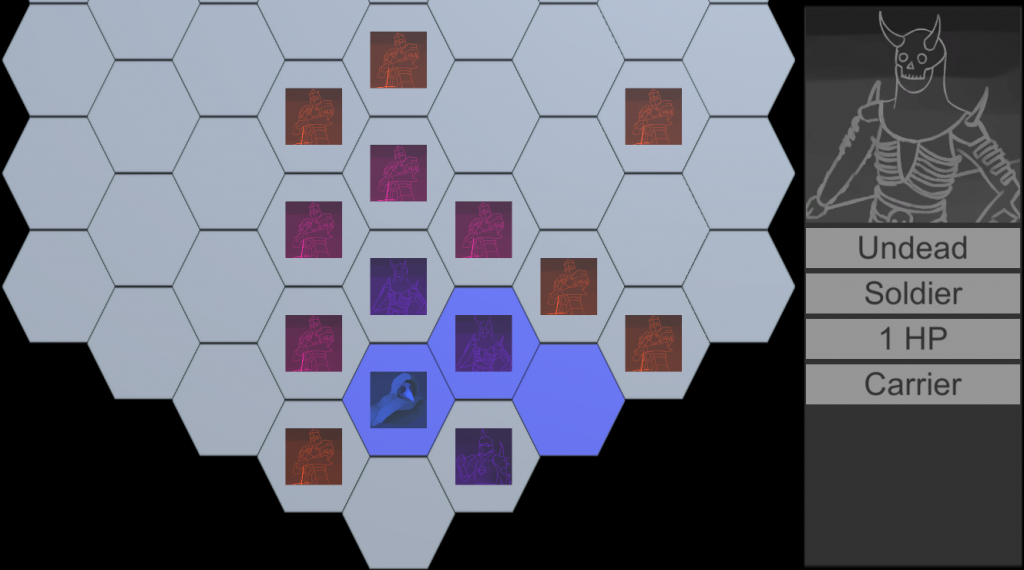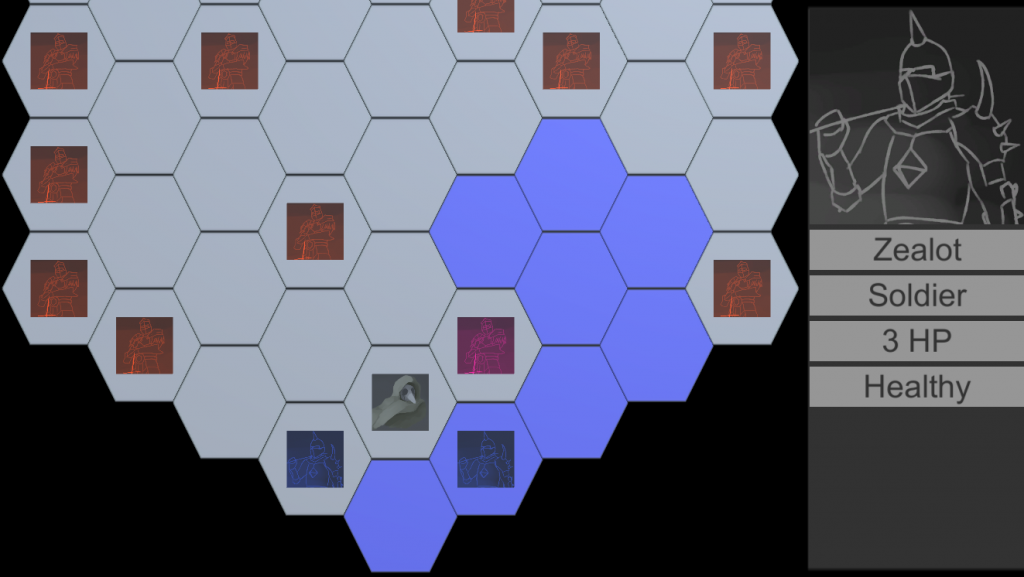In Week 6, our team began building assets specifically for our prototype level we will be making for our final product. We wanted to begin building something presentable this week because we have presentations with our faculty during our eighth week of development. We made some hard decisions about what exactly we wanted to build, and why we came to these conclusions.
We started with what levels and environments we wanted to include in the game. Given that we only essentially have a total of about 6 months of development, it would be hard to create a full experience that has the proper amount of care put in to every beat. Whereas a Vertical Slice of a larger experience gives us a small scope that allows for care and iteration necessary to make it feel fun and complete, while having it show what a full game of its type would feel like. In case you are unaware, a vertical slice is a term that basically means cutting out a small piece of a full game and creating that small section to a shippable state. With the aim of around 2 hours of total playtime for our final product at the end of the next semester, a complete tactical RPG of that size would feel rushed and incomplete. If we pick a small subsection of what could be a full tactical RPG experience, we get to get right to the best part of the experience (i.e. the climax) while hinting towards what more could be offered.
To decide which part of the full experience we wanted to slice out to create our prototype, we first needed to solidify what a full experience of our game would be. We decided to figuratively and literally map out our experience, seen below:
We created a high level story arc that maps out the journey our Protagonist would take to serve the Devil. He would begin by receiving the Plague powers due to the contract taken by the Devil, and join up with the rebellious faction to help take down the Church. He and the army would march to destroy all influence the Church holds in the South (seen at point 1), battle to cross into the Northern half of the country (seen at point 2), storm the Capital to kill the King and take control of the apparent seat of power (seen at point 3), then realize they need to storm the Great Cathedral Hall of the Pope equivalent to take down the true seat of power in the country (seen at point 4). Since we are to building only one piece of the experience, we decided that it would make the most sense to build the most interesting piece. Therefore, our prototype will cover the final assault on the Great Cathedral Hall of the head of the Church.
From this point, we jumped in to conceptualize the hall. We wanted to take inspirations from real world Gothic Cathedrals as a start, and then tweak it to fit our needs. Since we will be having a full-scale battle within this great hall, it will most likely have to be a bit larger than a standard cathedral. This also matches the idea that the head of the Church is a corrupt man who has used the powers granted to him to take from those who worship him. It would only make sense that his Cathedral would be ridiculously gigantic and grand.
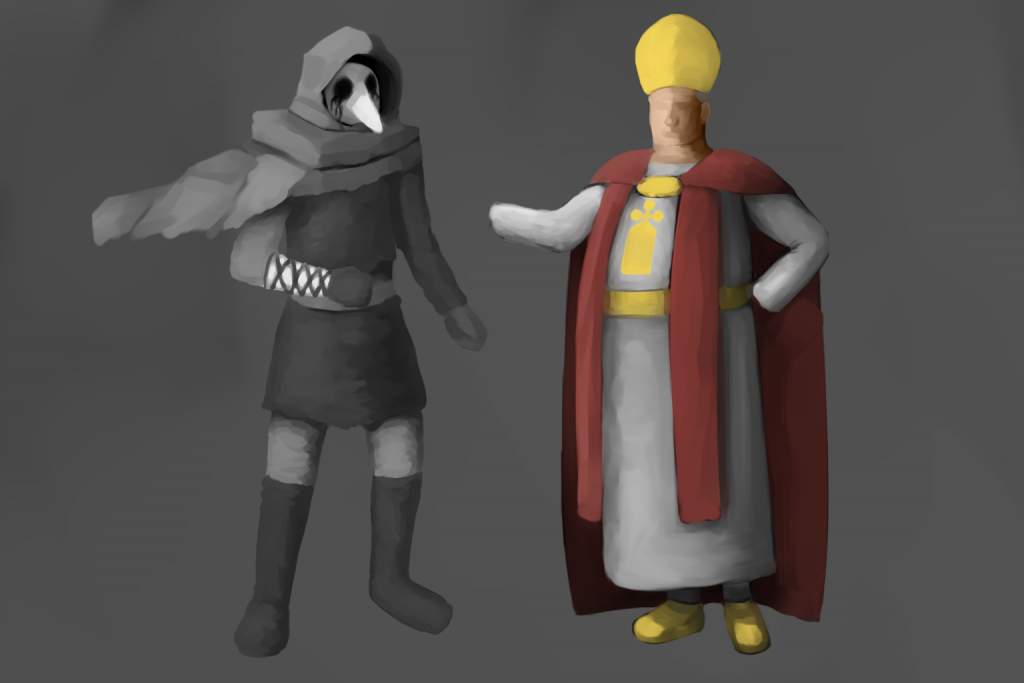
Speaking of the head of the Church, we started to flesh him out as a character. Since he is technically the “final boss” of what would be the full experience, we wanted to make him a foil to our Plague Doctor protagonist. The Plague Doctor is a sympathetic “villain” who uses evil powers for arguably noble reasons as he is trying to save his daughter. We decided to have the head of the Church to be a “good” character who is only fighting the army to keep his own wealth and status. The Plague Doctor is using evil powers for good purposes, while the head of the Church is using holy powers for evil and selfish purposes. The head of the Church also received his magic from signing a contract with an angel, giving solidarity to how our magic system works. Humans only receive Holy and Demonic magic if they establish a contractual agreement with divine beings.
Speaking of powers, our designers started brainstorming what divine powers the head of the Church may use in the level. That along with how to best structure the level both for difficulty and engagement. As seen above, the level layout is going to be a long hallway, with the boss seated at the end of the hall on his throne. We wanted to make sure the level layout was more interesting than just a straight hallway, so we began to play around with mechanics that would change how to navigate the space. If you look above, there are seven dice that are circled in red. These are labeled as light beam paths, which is a magic skill that the boss uses. He will randomly choose from 0-2 rows (depending on how much the player has progressed through the map), and shoot a beam of light down it. This damages your units, and destroys any plague infested bodies in its path. The four-sided dice circled in blue are barricades where units cannot walk through. The combination of these two mechanics forces the player to think about how they are moving through the hall. Other iterations with the level include implementation of enemy reinforcements, enemy AI behavior for those who protect the boss, and number of allies to enemies.
After conducting our first series of playtests with outside players, we found that people found the many character classes to be a lot to remember, and they did not use the plague mechanic much at all. The issue of character classes can be easily solved by simply removing classes to see if the gameplay is still balanced with less intricacy. The lack of using the plague was a big problem, though. If players were not incentivized to use the core mechanic of our game, we are doing something horribly wrong. We are currently in the process implementing new features with the plague to make it more attractive to players. For instance, we created a resurrecting mechanic to bring corpses with the plague back to life. This incentivizes the player to use the plague mechanic more as they will gain more units for battle this way.
We also started a mockup of the UI for the gameplay, along with playing around with controlling the camera when navigating the map. We have started trying out how we want the player to be able to rotate and zoom the camera when playing the game. Taking inspiration from other games in the genre such as Fire Emblem, we have implemented rotation snapping. The player is able to rotate the camera left or right in increments of 60 degrees, allowing them to view the map from several different angles. They are also able to zoom in and out of the map, allowing players to focus on any character they want to closely look at. We want players to be able to really explore the maps in the game, as we find touches like these to make it feel much more complete.
Last but certainly not least, we have made great strides in the progress of our digital prototype. We have the Plague Doctor being able to infect all units on the field with the plague, and have the possibility of spreading it each turn. Units that die with the plague also resurrect to be Undead units that fight for you. There is an initial UI for players to be able to view character portraits and select what each unit’s action will be. Overall, we have made great strides in our development this week! This places us in a very good spot for next week as we prepare for our halves presentations during Week 8.

